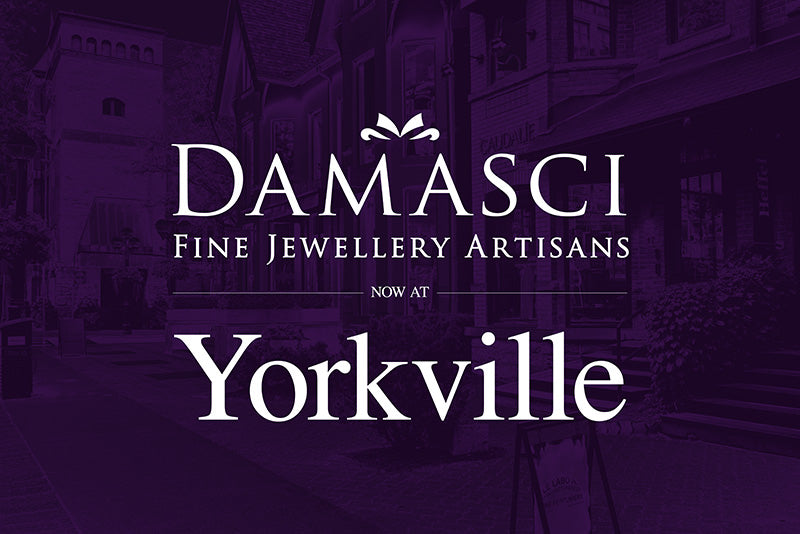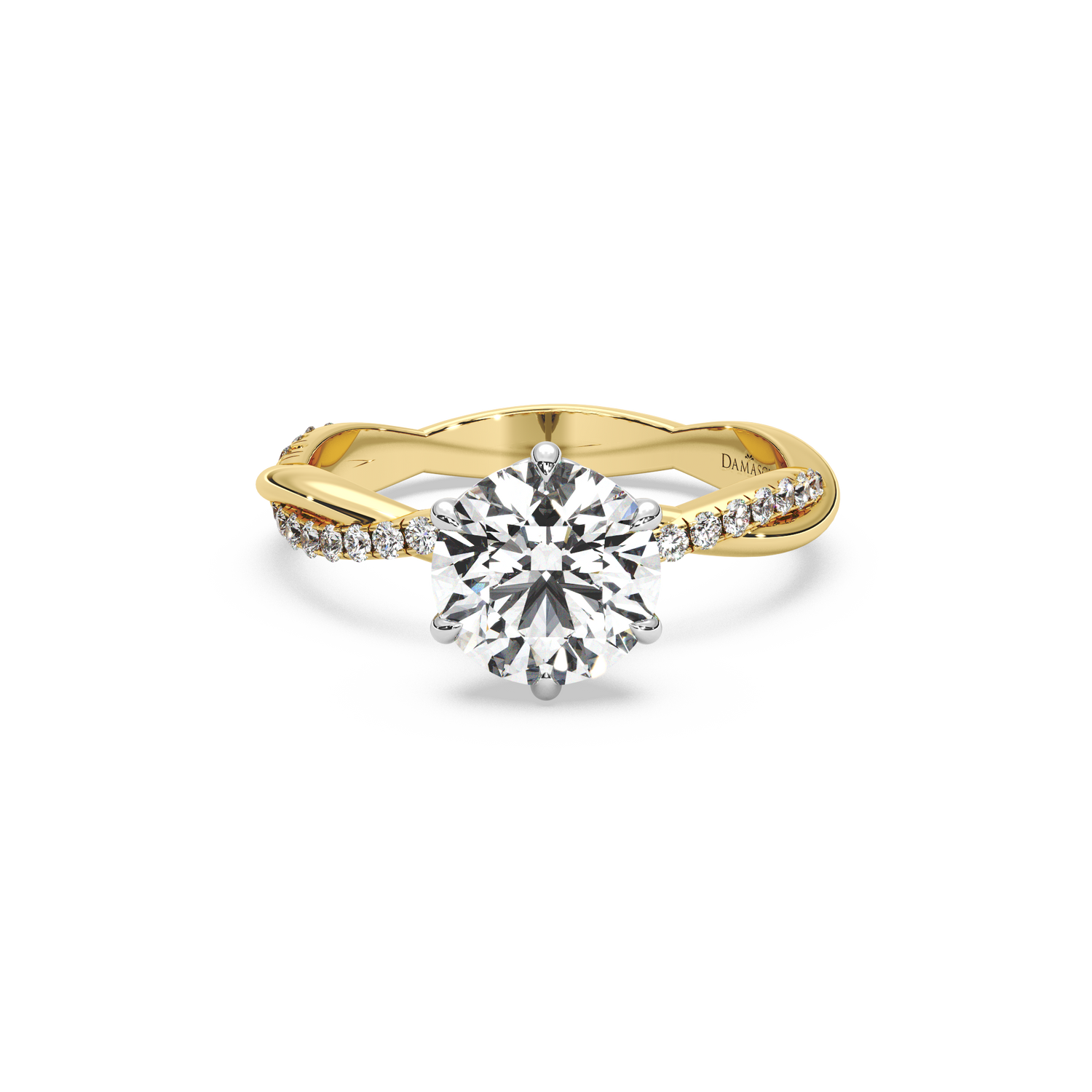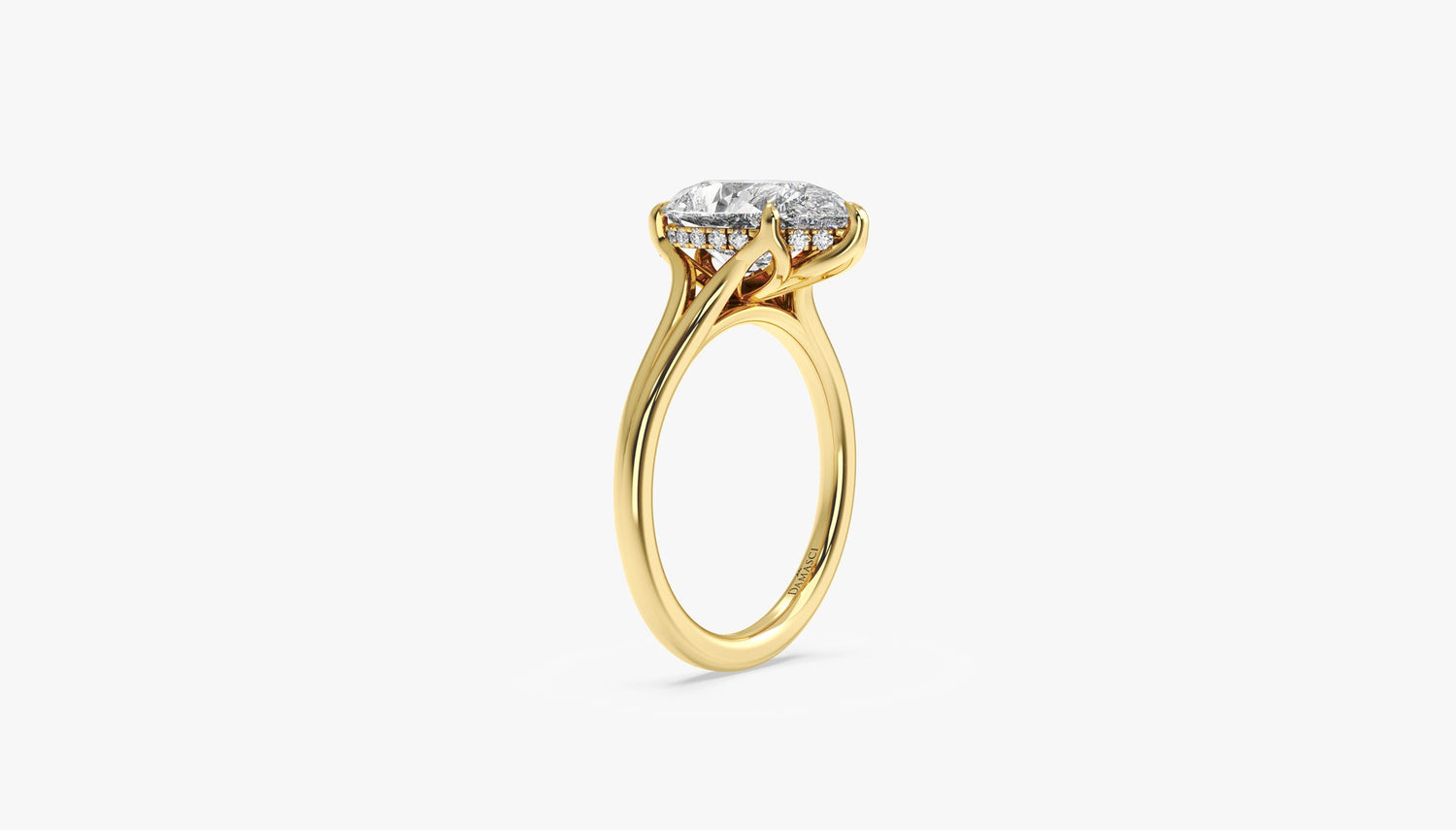When purchasing a diamond engagement ring, it is important that it has been assessed by the GIA, the most reputable diamond grading agency in the world.
Every diamond purchase should come with a professionally verified grading report. Certified diamond grading reports ensure that you know the specifics of the gemstone you're buying as it details its characteristics. Having a report from a recognized institution provides you with the peace of mind of knowing you have evidence documenting the quality of your purchase. The two main grading systems for diamonds in Canada are available through the GIA and GemScan grading laboratories. Up until the middle of the 20th century, there was no formal classification system to document the quality of diamonds, and buyers had no choice but to place their trust in the hands of the jeweller. Unless the purchaser were well-versed in the realm of diamonds, it would be a gamble in hopes of buying high-quality stones. The Gemological Institute of America (GIA) is a non-profit institute that was established in 1931 to educate the public on gems and jewellery. In 1985, GemScan, a company based out of Toronto, followed suit and created their own gemstone grading system. Both organizations provide the public with grading reports. However, there are significant differences between the two.. The GIA changed history when they developed reporting systems to keep the sales of gemstones fair and consistent. Recognized internationally as the leading resource for information on diamonds and precious stones, the GIA pioneered the 4 C’s diamond grading system and were the first to implement set science-based standards for the quality of gemstones. Technology has since advanced dramatically, and the GIA remains the most trusted, consistent and accurate source for diamond and gemstone reporting. Diamonds received by the GIA undergo an intensive analysis in a laboratory performed by professional gemologists and scientists with extensive grading experience. Before the GIA generates a grading report, diamonds are cross-checked by at least four certified gemologists to ensure that nothing goes overlooked during the screening process. Once the analysis is complete, the diamond is issued a serial number which is engraved directly onto the stone. A grading report matching the same number as the diamond is then generated. In addition to providing an accurate, unbiased analysis of your diamond’s carat, colour, cut, and clarity, the GIA report contains a diagram that plots any inclusions on the stone and also states a diamond’s fluorescence, symmetry grading and polish. GIA grading reports are secure documents and like money, feature holograms, and microprint lines to prevent report counterfeiting. The GIA archives all grading reports in its database. In the international gemstone marketplace, GIA grading reports provide instant credibility to industry professionals. [caption id="attachment_1868" align="alignnone" width="881"] Sample GIA Diamond Grading Report (source: Gemological Institute of America, www.gia.edu)[/caption] Based out of Toronto, Canada, GemScan is an independent agency that also provides gemstone reports and was established in 1985, long after the GIA. GemScan's reports lack reputability in the international gemstone marketplace and are often not accepted by diamond merchants during a re-sale. The screening process used by GemScan is not as strict or involved as the GIA’s, and only document the 4 C’s of a diamond, which can be misleading for consumers. GemScan reports do not provide all the necessary details you want when purchasing a diamond, and because they do not follow an international grading system, are often inconsistent. Reports from GemScan and other smaller laboratories often embellish their diamond grades, resulting in higher costs that do not reflect the quality of the diamond. Example: Same 1.00 Carat Round Diamond sent to the 4 laboratories below. Inaccurate grading results drive the costs of lower grade diamonds up for consumers LaboratoryCarat WeightClarityColourCut
Sample GIA Diamond Grading Report (source: Gemological Institute of America, www.gia.edu)[/caption] Based out of Toronto, Canada, GemScan is an independent agency that also provides gemstone reports and was established in 1985, long after the GIA. GemScan's reports lack reputability in the international gemstone marketplace and are often not accepted by diamond merchants during a re-sale. The screening process used by GemScan is not as strict or involved as the GIA’s, and only document the 4 C’s of a diamond, which can be misleading for consumers. GemScan reports do not provide all the necessary details you want when purchasing a diamond, and because they do not follow an international grading system, are often inconsistent. Reports from GemScan and other smaller laboratories often embellish their diamond grades, resulting in higher costs that do not reflect the quality of the diamond. Example: Same 1.00 Carat Round Diamond sent to the 4 laboratories below. Inaccurate grading results drive the costs of lower grade diamonds up for consumers LaboratoryCarat WeightClarityColourCut
| GIA | 1.00 | SI1 | H | VG |
| GEMSCAN | 1.00 | VS2 | G or F | IDEAL |
| EGL | 1.00 | VS1 or VVS2 | E or F | IDEAL |
| IGI | 1.00 | VS2 | G or F | EX |
The protocol used in the GIA grading system is credited for being the most accurate and consistent system in the world. Museums, auction houses, and the most renowned and legendary jewellery retailers turn to the GIA to assess and authenticate their high-value gemstones. When buying a diamond, you are investing in what will be one of your most prized and precious assets, and it is important that you protect it with a GIA grading report. At Damasci, we value the trust of our clients and are also committed to protecting your investment--by providing you with a guarantee of quality that is only available through GIA grading reports, you can purchase with confidence.





